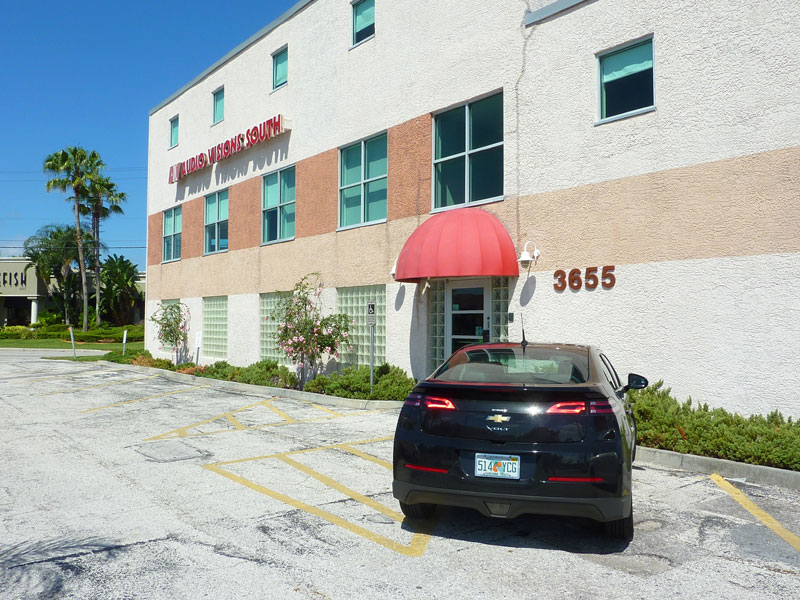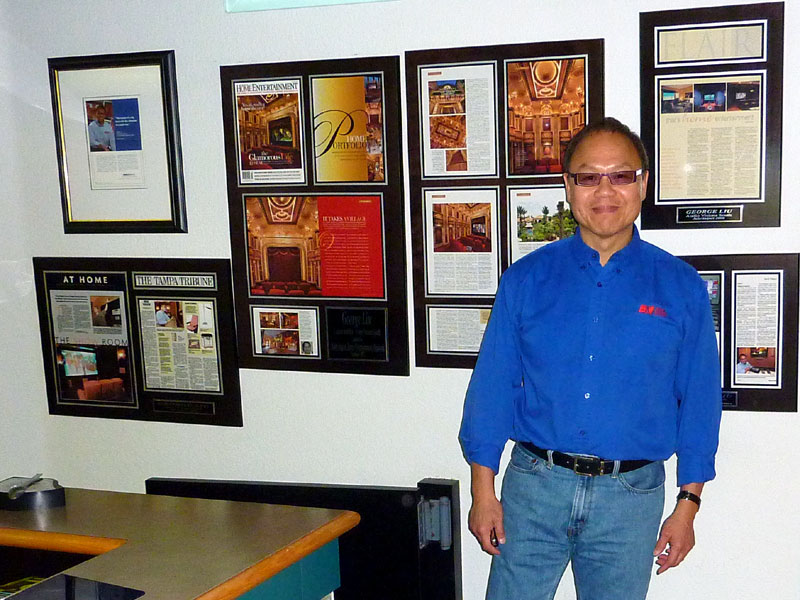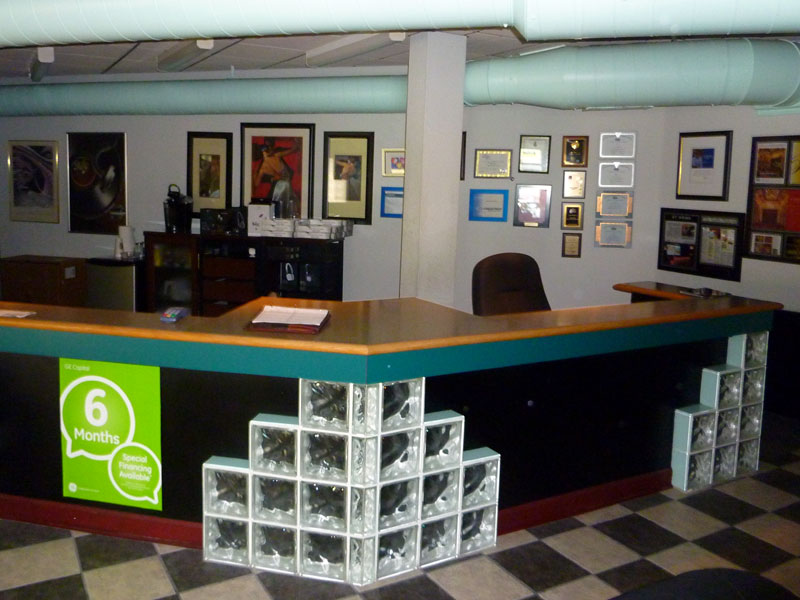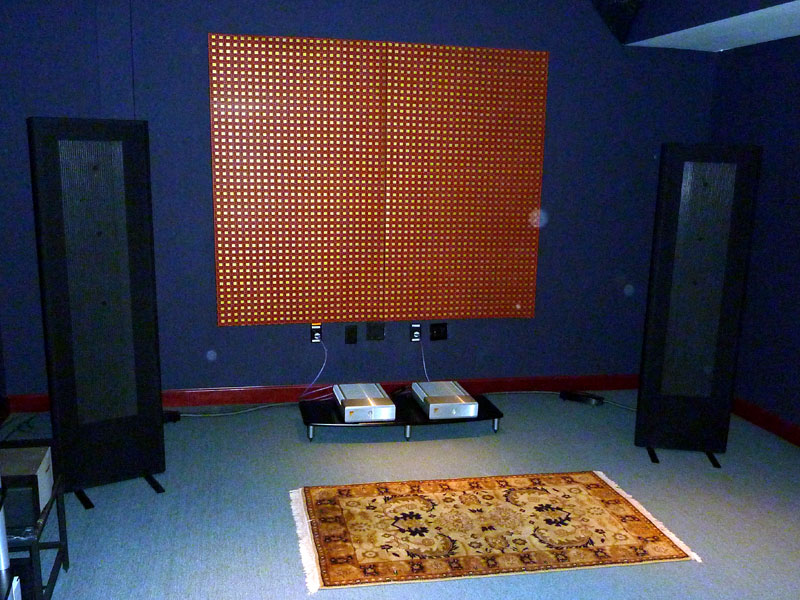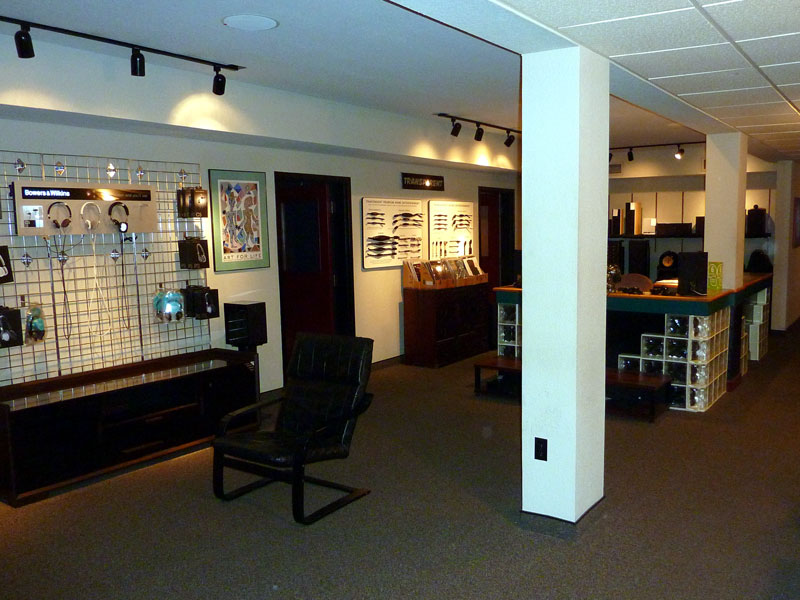A
Survivor's Story
uring adolescence, my sisters and I teased our dad about his "living in the past" -- his past being childhood during the Great Depression. But, as so often happens, children become their parents to varying degrees. I've picked up some of my dad's habits, sentimentality being one of them. I recall fondly my early adulthood, when record stores and audio dealers were abundant in my hometown of Madison, Wisconsin. I've reminisced about this before, so I won't bore you (again), but I will point out the obvious: the audiophile world of 2013 has changed dramatically from the one I inhabited in the 1980s. Even so, there are holdouts -- dealers in particular who have survived the interconnected electronic world to continue to spread the gospel of great sound, which seems even more relevant today, with subpar personal listening becoming a paradigm of sorts.
I recently visited one such dealer. Audio Visions South in Tampa, Florida, is George Liu's store. It's housed in a building whose sheer size had me walking around its exterior and looking for other inhabitants before entering the door. There was none to find -- no windshield-repair service or deli nestled in one corner. It's all Audio Visions South, and as I discovered it's this way for reasons relating directly to being an audio dealer in this day and age.
George Liu, founder and owner of Audio Visions South. First, a bit of history. George, who is a little older than I am, began working in hi-fi retail in the 1980s, when, as a quick look through any hi-fi magazine of the day will prove, dealers were far more plentiful and focused on stereo sound almost exclusively. Thinking that he wanted to build his own business and clientele, George took on a partner and the two of them did some market research, examining cities all over the country in which an audio store could not just survive but thrive. The two men, both in their 20s, chose Tampa, moving initially into a smallish space that, as they discovered, had low from-the-street visibility. They quickly moved to a better location, but around this time George's partner decided to leave the business. George's next step was as audacious as it was risky. He moved into his current location, an existing building of 9500 square feet, which provided space for many showrooms and offices. Growing his business after this point became a matter of necessity, therefore, and also of creativity. High-end audio was about to collide with home theater, when the future of two-channel systems seemed plausibly in jeopardy amidst the push toward video and more channels. This was not such a bad thing for audio dealers, who could transition easily to selling big-screen TVs, projectors and, of course, more amplifiers and speakers. However, the reality of the situation was far more complex. Home theater was a mirage; if people thought that assembling a stereo system was involved, they soon understood that a building a home-theater system, and housing it, was much more arduous -- and less fulfilling. Then came the Internet and the challenges it posed, fragmenting the audio business, creating two kinds of audio dealers: online and brick and mortar. Actually, there was a third kind: not long for this world, as traditional two-channel dealers began to fail in alarming numbers. At this time, George expanded his business into areas beyond traditional audio and video, ones that took advantage of the boom in housing, especially in Florida. These included home-automation and security systems. At that time, 90% of Audio Visions South's business consisted of these along with home theater. Two-channel audio, which was literally the company's foundation, shrank to an alarmingly low level.
The Audio Visions South reception desk. But two-channel rebounded, climbing to 30-40% of business today, a trend that George seems especially pleased about. During my visit, I told him about a recent experience I had. I walked into a hard-core two-channel shop in Phoenix, Arizona, and the moment I set foot in the door I felt like a stranger, leered at by the staff, whose collective look seemed to ask, "Are you lost?" I was wearing shorts and a t-shirt -- not the uniform of a refined listener, or so they thought. In contrast, Audio Visions South tries to cultivate a relationship with anyone who walks through the door. What customers first see is an array of conventional audio equipment, although nothing unusual in terms of its size or looks. The first person they see and interact with is the receptionist. Then a salesperson will appear and, after greetings, ask a question that has nothing to do with selling: "Do you have time for a tour of the store?" The idea here is to show the breadth of audiophilia on display and show off a few of the systems, which occupy separate rooms within the store -- or "vignettes," as George called them. These are not quickly thrown together or composed of only the most grand, expensive equipment. They feature certain well-chosen products that are the most likely to impress unsuspecting consumers and begin a dialogue -- and possibly a relationship. George admits to admiring Ayre electronics, but a brand that's even more prominent in his store is Magnepan. I can remember vividly (yes, here I go again) the first time I heard a Magnepan speaker. It was at Myer-Emco outside Washington, DC. I went there to buy new speakers for my system, at that time an Adcom GFA-555 amp, a DB Systems preamp and a Sony CDP-101 CD player -- a decent system, especially for a graduate student. While I settled for a pair of Polk Audio minimonitors -- I don't even remember the model -- it's the Maggies (MG 2a's, I think) that I saw and heard that stick in my mind all these years later -- their extreme purity, the sense that I was hearing reproduced music for the first time. No kidding -- that's what I thought then, because I had heard nothing like those big panels. Myer-Emco was not a survivor. The regional chain closed its doors in 2010.
The Ayre/Magnepan system: a reminder that dark rooms and small flashes don't mix. As I walked into the first of Audio Visions South's "vignettes," the image of those speakers, and the sensation of hearing them, flashed into my mind with the abruptness of a lightning strike. This time it was 1.7s with a notable addition: a pair of Ayre MX-R monoblocks. While speakers and amps, $1995 and $18,500 per pair respectively, might seem out of alignment in terms of cost, the rationale behind the pairing was understood: to create a memory. In my case, they dredged one up instead.
Headphones, records and a wall of speakers: this must be the place. Outside this demo space was an area devoted to headphones, a counter with LP reissues that I regretted not pawing through, and a wall of speakers, both minimonitors and floorstanders, that reminded me of a similar feature in so many audio shops of yore. Around a corner were more rooms, including another that was sure to surprise to an unsuspecting visitor. TAB readers are familiar by now with Magnepan's Tri-Center concept, which mates a true center-channel speaker, a CC5 ($1095) in this case, with a pair of motorized MMC 2 line-source satellites ($1995/pair). This trio is used along with motorized right and left MMC 2s, the idea being to introduce phase information to the center channel, which enhances both home-theater and stereo sound, a pair of DWM woofers ($795 each) completing the picture. The sonic outcome is far less influenced by the listener's position in the room, making the system perfect for a quick walk-by demo -- and even better for one that's longer.
A and V together: the Magnepan Tri-Center "vignette." By this time in the tour, even those customers who are
interested in information on a home-security system or a flat-screen TV may be amongst the
converted, but that's not really the point. Audio Visions South has made a connection and
reminded those who visit what's at the heart of the store -- great sound. From this, the
seeds of interest and appreciation germinate, and "living in the past" becomes
living better in the future. |

